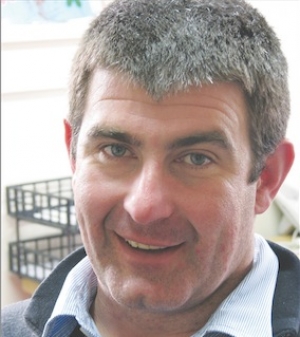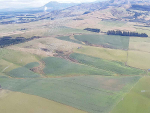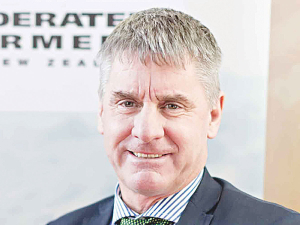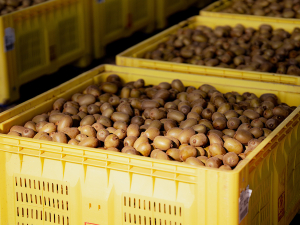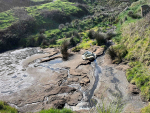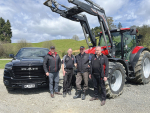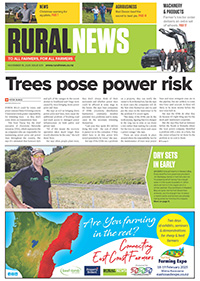CRITICS SAY the recent ‘It’s now or never’ Ruataniwha meeting organised by IrrigationNZ and Federated Farmers did not compare the operational set-up of Hawke’s Bay’s proposed irrigation scheme with others in New Zealand.
But the event in Waipawa was not advertised as a detailed operational overview of the project; it was set up to inform farmers about what irrigation can do for them onfarm. Those farmers are now free to assess the scheme in greater detail and have done so; the dam now has enough support to get it over the line and the focus has moved to getting farmer uptake to over 60%.
The meeting we held was for information sharing at farm scale: comparable irrigating farmers from other parts of New Zealand sharing their experiences about how they have personally funded irrigation development, how it has improved their productivity and diversified their land use options, and how their wider communities have benefited from this investment.
We had a clear objective for the event which was met: to provide accurate and quality information about irrigation investment onfarm. We gave Hawke’s Bay farmers and growers access to relevant data sourced directly from their counterparts in other irrigating regions, supported by our own research and surveys.
Calls from those opposed to Ruataniwha, that said farmers and growers should shy away from the project because they are not part of the initial ownership structure, were a fallacy.
Despite what some have said, farmer-only irrigation scheme development is not the norm in the South Island; in fact, this could not be further from the truth. All large scale irrigation schemes developed in the past 10 years have had a mixed ownership and investment structure.
Lines companies Alpine Energy and Electricity Ashburton, private entities earthmoving company Rooneys and local government all have taken stakes in irrigation developments. For example, the Barrhill Chertsey Irrigation scheme is a 50:50 joint venture with Electricity Ashburton which receives a commercial rate of return on its investment. And the North Otago Irrigation Company scheme is underwritten by a loan from the Waitaki District Council. So it is incorrect to say farmer financed irrigation schemes have been the only method used to date.
Here’s what it takes to get a modern irrigation development off the ground: an initial outlay of hundreds of millions of dollars for storage and distribution infrastructure – about $275m in the case of Ruataniwha. This is well beyond the debt financing levels of individual farmers, particularly as they must now spend a lot of money onfarm to install efficient irrigation equipment and alter their farming systems to meet new environmental standards. It is absurd to expect this outlay and the cost of storage and distribution infrastructure to be covered through debt alone. Without council or other private investor support it is unlikely any irrigation scheme would have seen the light of day in the last couple of decades.
Central government in New Zealand has now recognised this huge stumbling block. Targeted funding is available through the Irrigation Acceleration Fund for the early stages of development including feasibility and design, and more recently Crown Irrigation Investments is assisting with commercial loans for irrigation projects.
Interestingly nowhere else in the developed world has irrigation scheme development been left to a market-only approach. Typically, schemes are constructed by a majority grant from local and national governments with a lesser contribution from private individuals – usually ranging from a 60:40 to an 80:20 public-private split.
In the case of Ruataniwha, farmers can be part of the ownership structure: there is a clear pathway for those who wish to invest and in the long-term it makes sense for them to do so.
The other persistent criticism of Ruataniwha is that the cost is too high. But you only need to hear a farmer’s view on this to see it in perspective. Rab McDowell, a sheep and beef farmer who spoke at the Waipawa event, is chairman of the Barrhill Chertsey Irrigation Ltd scheme, recognised as very expensive. Yet the company’s latest share offer saw 30% more water being taken up and there is potential for more growth next year.
The North Otago Irrigation Company is also about to publish a prospectus for its stage 2 and it appears they will get the required uptake to get construction underway. South Island farmers are also paying big money for access to water but recognise the value of doing so.
Make no mistake, the Central Hawke’s Bay community is behind the Rutaniwha dam. The turnout and support shown at the ‘Now or Never’ meeting showed this. Communities in Hawke’s Bay are now turning their minds to new business opportunities arising from the dam.
A further 25,000ha of irrigation will have huge flow-on effects for local service industries – during construction (dam and onfarm) and afterwards (maintenance and increased and more consistent production). There will be increased need for construction, agribusiness related service industries (transport, fencing, advisory), retail, and education and health services. For every $1 an irrigator makes, at least another $3 is created in the local community.
Attention now needs to be on how New Zealand best advertises the Hawke’s Bay ‘high value food production’ opportunity internationally – prime horticultural land, a climate that grows almost anything and a reliable water supply.
Hawke’s Bay has been given an amazing opportunity with this dam, and while IrrigationNZ supports robust debate as part of the process to evaluate Ruataniwha’s viability, energy should not be wasted by picking unnecessary holes in a project which, while not perfect, has been carefully thought through and modelled by experts and voted on by ratepayers.
• Andrew Curtis is chief executive of Irrigation NZ.





